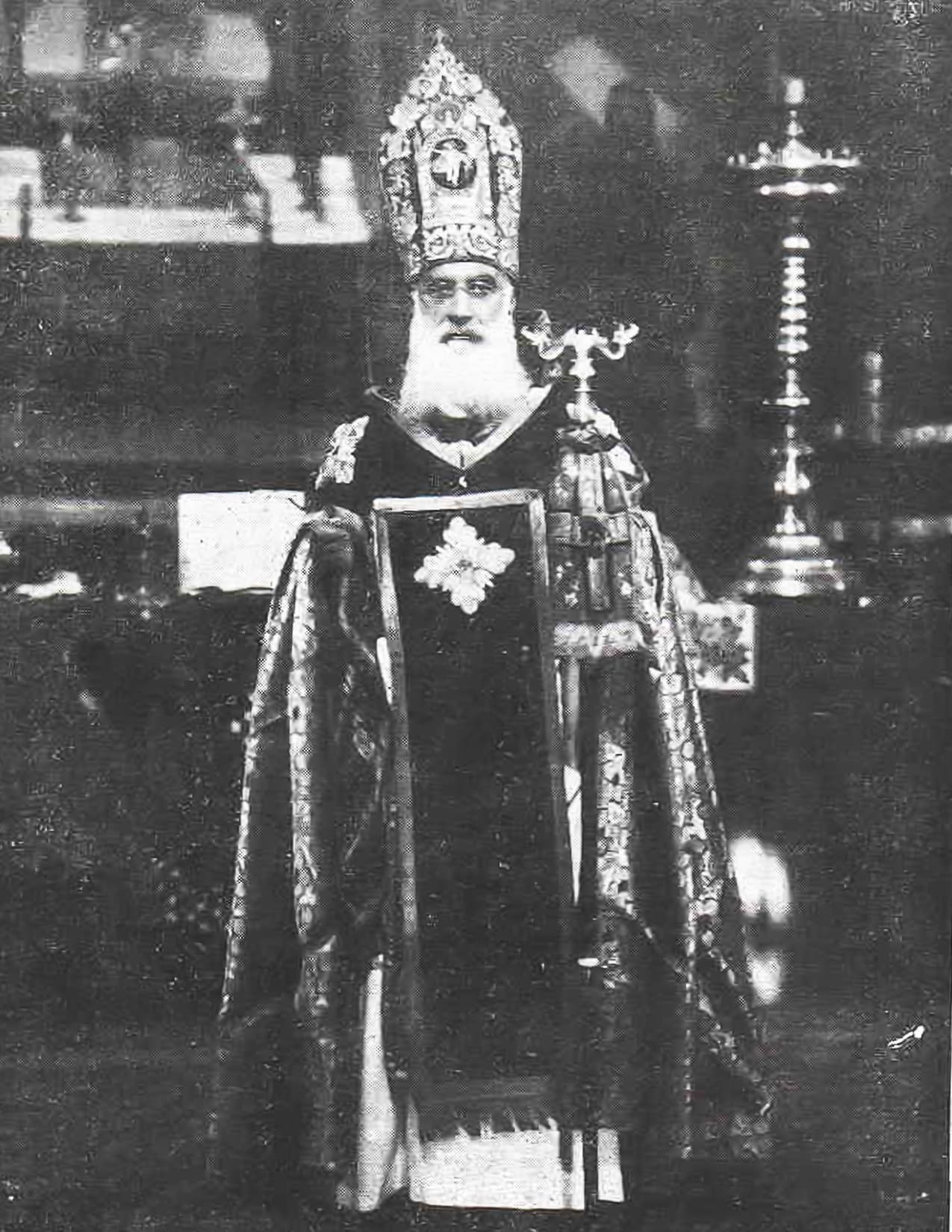ON ARCHBISHOP NERSES MELIK-TANGIAN

Dear Archbishop Anoushavan,
I would like to thank you and the editorial board of the online “Crossroads” for remembering Archbishop Nerses Melik-Tangian. The biography which was supplied was filled with important details about this extraordinary clergyman. I have attached a photograph of him published in 1945, vested as the Abbot of the Vank (Monastery).
I appreciate the limited space available in “Crossroads,” but I would like to add an important detail and share some personal thoughts about this venerable prelate.
In 1913, Archbishop Hovsep Sarajian, who had previously been the prelate of the newly established Armenian Church in the United States and had been appointed prelate of the important and expansive prelacy of Van-Vasbouragan, had entered into eternal rest. Owing to the ensuing situation in 1914, the prelacy of Van-Vasbouragan was not able to convene an election, and consequently, when the Genocide commenced, Van was without a formal prelate. It must have been very challenging for the Armenian community in Van to face the trials and tribulations, the deportations and massacres in the absence of a spiritual head of their prelacy.
In 1917, Archbishop Nerses Melik-Tangian was appointed the new prelate of Van-Vasbouragan. The appointment was important on so many different levels: spiritual, administrative, psychological. Archbishop Nerses, as “Crossroads” correctly explained, had served as Abbot of several famous Vanks, including Datev, and so when he arrived in Van in 1917, one of the first actions which he promoted was the appointment of abbots (“vanahayr”) to some of the famous Vanks that had been left without leadership: Aghtamar, Varak, and the national shrine of Saint Bartholomew near Bash-Kaleh.
At the same time, Archbishop Nerses was an ardent supporter of education. He had been privileged to complete doctoral studies in Canon Law, and in fact, he prepared the critical edition of the “Ganonakirk” of the Armenian Church in 1905. He expended every effort to establish schools for all ages and for both boys and girls, and in many cases, he opened the schools inside the monastic complexes.
His background in diplomacy prepared him to accomplish the unthinkable: he prevented the massacre of thousands of Armenians in the region around Salmasd, Urmia, Khoy, Magou, and St. Thaddeus Vank by the Ottoman army which had advanced eastward into Persian territory. Archbishop Nerses was able to bring the Ottomans and the Persians and the Armenians to the negotiation table and thus averted the extermination of thousands of innocent Armenians.
For me, Archbishop Nerses represents the “monastic ideal” of the Armenian Church. He clearly understood the critical position of the Vank not only in the past history but in the present needs of the Armenian nation. It must have broken his heart to watch the destruction of so many Vanks by the Ottomans and by the communist Armenians. He committed himself to the Vank lifestyle, and even when he was shouldering the responsibilities of ministering to his prelacy, he always seemed to approach solutions by drawing from the manifold spiritual examples of Armenian monasticism.
Archbishop Nerses was a scholar, a priest, a bishop, a champion of education and a stalwart in the rights and restitution of Armenian nationalism. Nevertheless, as we see in this majestic photograph, the foundation in his soul remained his vows to the Vank and to the direct relationship between God and the Armenian people through our monasteries.
Thank you for remembering this venerable Vanahayr and Hayrabed.
Archdeacon George-Giragos
(Rev. Dr. George A. Leylegian)
